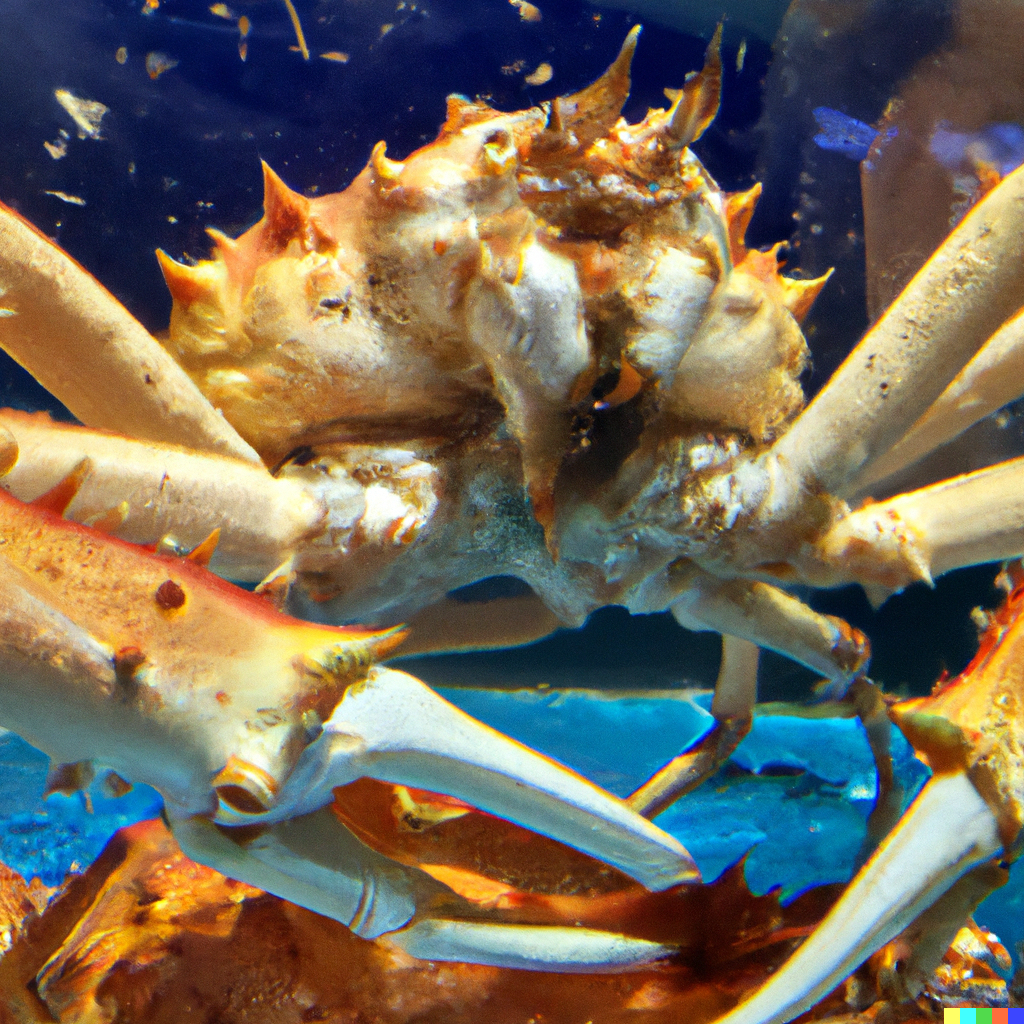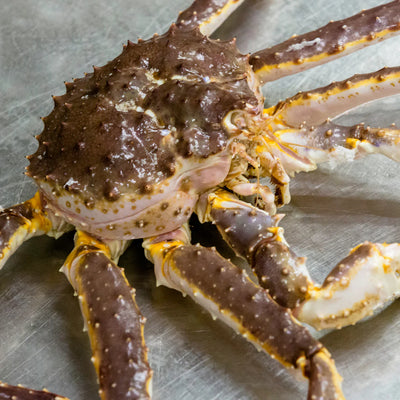Live King Crab Trivia: Fun Facts You Didn't Know

King Crab Growth: How Big Can They Get?
When it comes to seafood, live king crabs are among the most prized delicacies, and for good reason. Found in the cold waters of the North Pacific Ocean, these large and delicious crustaceans are renowned for their sweet, tender meat. But beyond their culinary appeal, there’s much more to know about these fascinating sea creatures. In this post, we’ll dive into king crab trivia that reveals some fun, surprising facts you probably didn’t know about Alaskan king crabs and their close relatives.
1. King Crabs Can Grow to Enormous Sizes
King crabs are among the largest crabs in the world, with some truly giant specimens out there. The largest king crab on record weighed over 28 pounds and had a leg span exceeding 5 feet! These impressive creatures are found in the deep sea, where they can grow to such massive proportions thanks to ample space and favorable conditions.
If you're curious about where to find the best king crab for your next seafood feast, consider ordering live king crabs or Alaskan Red King Crab legs for an unforgettable meal.
2. King Crabs Are Not True Crabs
Although they share a name, king crabs are not considered true crabs. They belong to a different group of crustaceans and are more closely related to hermit crabs and porcelain crabs. Unlike true crabs, king crabs have a long, spiny tail tucked under their body, and their legs are often larger and more powerful, particularly their giant claws.
3. Unique Walking Style of King Crabs
One of the more interesting facts about live king crabs is their unique walking style. They walk forward on their tiptoes, using their long legs like stilts, allowing them to move gracefully over the rocky ocean floor. Their claws stay raised in a defensive posture, making them agile and efficient when navigating difficult terrain.
4. King Crabs Regenerate Lost Limbs
Like many other crustaceans, king crabs have the fascinating ability to regenerate lost limbs. If they lose a claw or leg, they can grow it back over time. This process takes several molts, but eventually, the crab will have a fully functional limb again. This adaptation helps them survive encounters with predators and maintain their competitive edge in the ocean's food chain.
You can experience this marvelous crustacean by ordering king crab leg pieces or golden king crab from sustainable seafood providers.
5. King Crabs Live in Deep, Cold Water
King crabs are cold-water dwellers, typically found in the deep sea at depths of up to 600 feet. They thrive in cold waters where temperatures range between 32°F and 40°F. The deep-sea environment is ideal for king crab fishing, where these giants grow large and develop their rich, sweet flavor.
For those wanting to try king crab, it's worth exploring Alaskan king crab legs, known for their exceptional taste.
6. Ecological Importance of King Crabs
In the North Pacific ecosystem, king crabs play an essential role in the food chain. They are both predators and prey. King crabs feed on various organisms, such as small fish, mollusks, and other invertebrates, while larger predators like octopuses and sea otters feed on them. This delicate balance helps maintain the ecosystem’s health and biodiversity.
Thanks to strict fishing regulations and sustainability efforts, king crab populations remain healthy, which makes them a reliable and sustainable seafood choice.
FAQs About King Crabs
Q: How do you cook king crab?
A: King crab is incredibly versatile and can be prepared in various ways, including boiling, steaming, grilling, and baking. One of the most popular methods is steaming the legs and serving them with melted butter. For an ultimate dining experience, try live king crab or Alaskan king crab legs from trusted seafood suppliers.
Q: How long do king crabs live?
A: In the wild, king crabs can live up to 20 years, depending on their environment and natural predators.
Q: What's the difference between king crab and snow crab?
A: King crabs are much larger and have sweeter, more tender meat compared to snow crabs, which have a more fibrous texture. King crab legs are often thicker, making them ideal for seafood feasts.
Conclusion: The Marvel of Live King Crabs
King crabs are not only a delicious seafood delicacy but also fascinating creatures with a wide array of unique traits. From their massive size and ability to regenerate limbs to their deep-sea habitat and ecological role, there's always something new to learn about live king crabs.
Next time you’re planning a seafood meal, why not indulge in live king crab or golden king crab? Not only will you enjoy a taste sensation, but you’ll also be supporting sustainable fishing practices.
Also in News

How to Make Sea Bream Sushi With Dry-Aged Tuna & Crab Roll — Step-by-Step With Chef Joshua
A complete guide to making Sea Bream sushi at home, including filleting, curing, slicing, and building a Dry-Aged Tuna & Crab sushi roll. Chef Joshua shares professional tips for restaurant-quality results.

Boiled Crab for Game Night: Everything You Need for a Perfect Seafood Party
Take your game night to the next level with a Boiled crab party. Learn the best recipes, cooking tips, and hosting hacks for a memorable seafood feast.

Boiled Crab for Date Night: A Romantic Guide to the Perfect Seafood Feast
Make your next date night unforgettable with a romantic Boiled crab experience. This guide covers everything you need to know, from ambiance to the best crab varieties.

